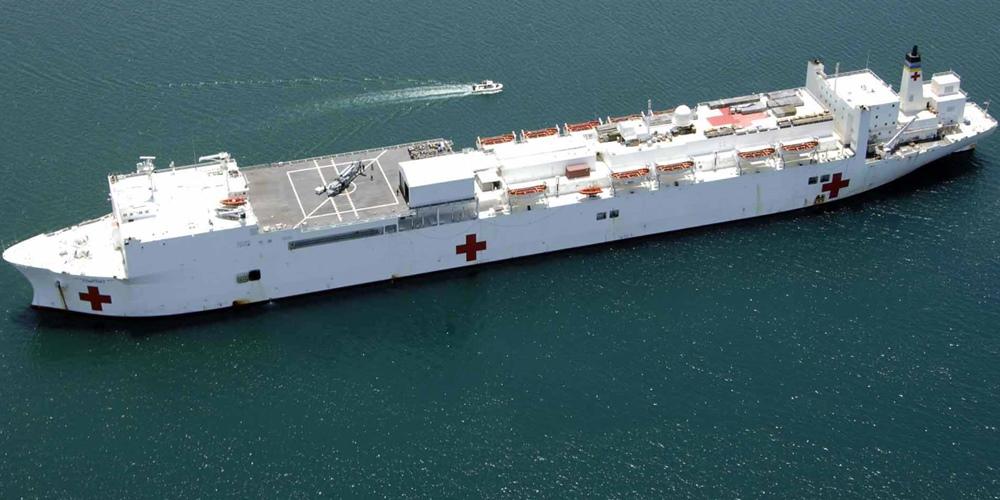Table Of Content

In March, Celebrity Cruises reported two norovirus outbreaks, as did Royal Caribbean International and Princess Cruises. Princess Cruises reported its first outbreak of the year in February, and Royal Caribbean International reported two the previous month. P&O Cruises also reported an outbreak on its Arcadia cruise ship this year. What’s more, the CDC has established a rigorous Vessel Sanitation Program (VSP) to help prevent the overall spread of illnesses on cruise ships. Not only do they inspect a cruise ship’s medical center, but they also monitor their portable water systems, dining rooms, housekeeping procedures, heating, ventilation, air conditioning (HVAC) systems, and more. There have been 13 norovirus outbreaks on cruise ships since the start of the year, the most outbreaks the U.S. has witnessed since 2012, and more than there were in all of 2022.
Outbreaks 2016 reports

This may explain why so many people of all ages get infected during norovirus outbreaks. Your travel insurance will not cover cancellations due to the fear of illness, but it will cover you if you cancel because you got sick before you went or are stricken onboard. Specifically, it could also pick up medical expenses and/or compensate you for days you missed if you left the ship before the end of the cruise. Since policies vary between travel insurers, read the fine print before you go.
Nearly 30 Silversea cruise passengers get sick in gastrointestinal illness outbreak - USA TODAY
Nearly 30 Silversea cruise passengers get sick in gastrointestinal illness outbreak.
Posted: Mon, 15 Apr 2024 22:24:45 GMT [source]
What do cruise ships do to prevent norovirus outbreaks on board?
Named after Norwalk, Ohio, where the first outbreak was identified in 1968, norovirus can lead to severe vomiting, diarrhea, stomach cramps, and, in certain cases, even more serious consequences such as severe dehydration. Norovirus — a common and contagious virus that causes vomiting and diarrhea — is on the rise throughout the United States, especially on cruise ships. However, unlike on land, most basic travel insurance policies don't cover medical treatments on cruise ships as they are not from the patient's primary caregiver. Purchasing cruise travel insurance with health coverage (medical clauses) is highly recommended. A cruise ship's medical facility can treat only passengers experiencing minor health issues - seasickness, scrapes, sunburns, etc. More severe medical emergencies can't be handled on the ship and usually require medevacs.
Health5 Things You Didn't Know About Nasty Norovirus
The CDC regularly inspects cruise ships and monitors the number of outbreaks. This year, norovirus also has been reported on cruises operated by Royal Caribbean International, Celebrity Cruises, Princess Cruises, Holland America and P&O Cruises. The worst year for norovirus was 2006, when 32 ships reported infections, according to the CDC. The most recent norovirus outbreak was reported on the Viking Neptune cruise ship. During its June 6 to June 20 voyage, 110 of the ship’s 838 passengers, or 13.1 percent, were infected.
C.D.C. Investigating Gastrointestinal Illness on Luxury Cruise Ship - The New York Times
C.D.C. Investigating Gastrointestinal Illness on Luxury Cruise Ship.
Posted: Thu, 08 Feb 2024 08:00:00 GMT [source]
Norovirus outbreaks have hit ships from a range of different cruise ship companies including Viking Cruises, Celebrity Cruises, Holland America, Princess Cruises, Royal Caribbean International, and P&O Cruises. Yeah, even though norovirus is known as the “Winter vomiting bug,” it’s activity is not necessarily confined to the colder months. There have already been an unlucky 13 recorded norovirus outbreaks on cruise ships under U.S. jurisdiction so far in 2023. That’s the highest tally in 10-years, ever since 16 such outbreaks occurred in 2012, according to the Centers for Disease Control and Prevention (CDC) Vessel Sanitation Program.

Norovirus is typically spread by ingesting small particles of fecal matter, eating contaminated food, touching contaminated objects or surfaces and then touching the mouth or eyes, or having direct contact with an infected person. An infected person is the most contagious when symptoms are present and within the first few days of feeling better. According to the Minnesota Department of Health, symptoms of norovirus infection include vomiting, nausea, diarrhea, stomach pain, muscle aches, low-grade fever and headache. These symptoms usually appear between one to two days after contracting the virus but can appear as early as 12 hours after exposure. Cases typically last between 24 and 48 hours, though the illness may be more severe in young children and older adults, according to the Arizona Department of Health Services.
It’s really not that surprising that norovirus outbreaks have already reached a high water mark this year. As many Covid-19 precautions went the way of sweater vests in late 2022, it’s probably not a coincidence that this past winter saw a surge of norovirus cases in general, as I reported for Forbes on February 10, 2023. On top of that, cruise ships returned to full operations for the entire calendar for the first time since early 2020. Throw in the whole idea of “revenge travel” with people scrambling to catch up on travel delayed by the pandemic, and you’ve got a bunch of set ups for norovirus outbreaks. Norovirus is also known as the “Cruise ship virus” because conditions on cruise ships can stack the deck for the spread of norovirus, so to speak. Typically, a cruise ship will have dozens, hundreds, and in some cases thousands of people sharing surfaces, objects, food, drink, and who-knows-what-else over extended period of times.
Outbreaks happen mostly during winter months and mainly in more crowded places with close quarters. Among those are schools, hospitals, nursing homes, dormitories, prisons, big resorts, bigger passenger ships (including cruise ferries). Norovirus is often branded as "cruise ship virus" simply because on ships health officials are required to report every gastrointestinal illness incident. This means Norovirus outbreaks are reported more quickly on ships than on land. Just for comparison, the virus can afflict as many as 3000 people per day in only one big city, which is about the passenger capacity of a typical modern cruiser.
If seasickness symptoms are accompanied by diarrhea or fever, passengers should immediately seek medical treatment for Norovirus and avoid spreading the illness to others. So it comes as no surprise that when CDC reports an illness outbreak on some vessel, big media sources do not immediately (or ever) respond to the news. You may hear about it on your local radio station, or on your local cable operator, but not necessarily on ABC, CNN, and often not even on Yahoo and MSN news online.
While each virus has a different ability to transmit, norovirus is a highly transmissible infection. According to the CDC, each person who is infected with norovirus sheds billions of viral particles. Many of the symptoms last for just two or three days and while it may come on and leave quite quickly in comparison to other viruses, during the time the symptoms are present, it can be extremely uncomfortable. Norovirus is a viral infection that is one of the most common types of gastroenteritis — a condition that causes nausea, vomiting, diarrhea, and abdominal upset. There’s no specific treatment or antiviral for norovirus, according to Ostrosky, but most cases can be managed at home with supportive care like hydration and rest. Sick people should also isolate until their symptoms resolve, the experts emphasize.
Instead of serving yourself a gloved crew member will do it for you,” said Chiron. So if you're planning to set sail this summer, here's everything you need to know about the norovirus. Be sure to read your contract -- on the back of your cruise documents or ticket -- very carefully. And recent data from the CDC has noted that over 15% of norovirus tests are coming back positive. The ship project started in March 1999 with the vessel's acquisition through a donation from Balcraig Foundation (UK), which purchased the boat for US$6,5 million. Attacking a hospital ship is considered a war crime, but enemy forces have the right to board them for inspections.
Because people of all ages can get sick with norovirus, it can spread easily and quickly. You can get norovirus illness many times in your life because there are many different types of noroviruses and one type may not protect you against the others. For the most part, Norovirus outbreaks are the results of passengers setting sail sick ... The allure of the open sea, captivating itineraries, and the luxurious promise of a carefree escape have long made cruising a popular choice for vacationers. However, this industry’s lustrous appeal has recently been overshadowed by a surge in outbreaks of a particularly stubborn and contagious pathogen — Norovirus.
Therefore, the CDC has reports from every cruise vessel, on just about every cruise, even if there was no illness. If at any time during the cruise the number of ill passengers or crew exceeds 2 percent, the vessel must file a special report notifying CDC of the illness. According to the CDC, the most common settings for norovirus outbreaks are health care facilities, restaurants or catered events, schools, day cares and, of course, cruise ships. It's a very common, highly contagious, ruthlessly efficient and uncomfortably bad virus affecting the stomach and large intestines.

No comments:
Post a Comment